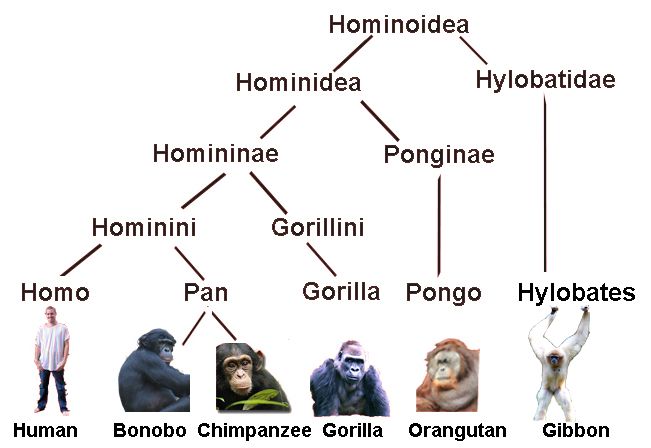“Homo-Homologies: Armitage & Myrup”
Both Michael Armitage and Rasmus Myrup create anthropomorphic work situating the human as animal and vice versa:
Angus Deyn
Rasmus Myrup builds a natural environment within the gallery ; creating[1] a museum diorama, mirroring ethnographic displays: positioning the art gallery as a museum. In so doing, Myrup plays with the concept of the museum as keeper of knowledge and producer of history. Weaving together Counter-Narratives to form a Counter History Myrup questions the museum’s role of legitimator in the field of knowledge production; queering prehistory[2]. He makes evident a lack of pre-human queer history, conspicuous in its absence. As we now know such behaviour to be pervasive in animals; it is only logical to expect it in pre-humanity.
Armitage, on the other hand, situates his work in the natural through the use of Lubugo Bark as canvas ; the materiality of which is clearly evident in the painting through[3] ‘tears and sutures’[4]. For Armitage, this only situates the work in the natural; painting on wood; but also in East Africa, where he grew up. For him, this ‘destabilizes’ the painting, distancing his work from the Western Art tradition he references, allowing him to critique or subvert the language without operating within it[5].
I chose to look at these artists side by side to analyse the way each opens up a similar discourse while operating within a different set of references, in different media, and, in different styles. Where Myrup ‘stages the prehistory of homosexuality amongst hominins’ (OFluxo) , suggesting a kind of primacy to the homosexual experience; Armitage portrays homosexual acts amongst hominoids[6], contrasting this with humans, revealing our own intrinsic animality or internal animal; the animal that for Derrida, therefore I am[7].
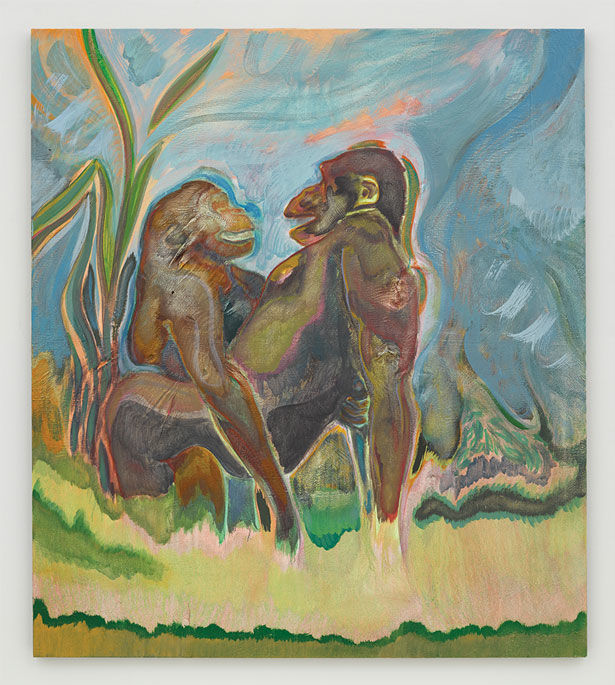
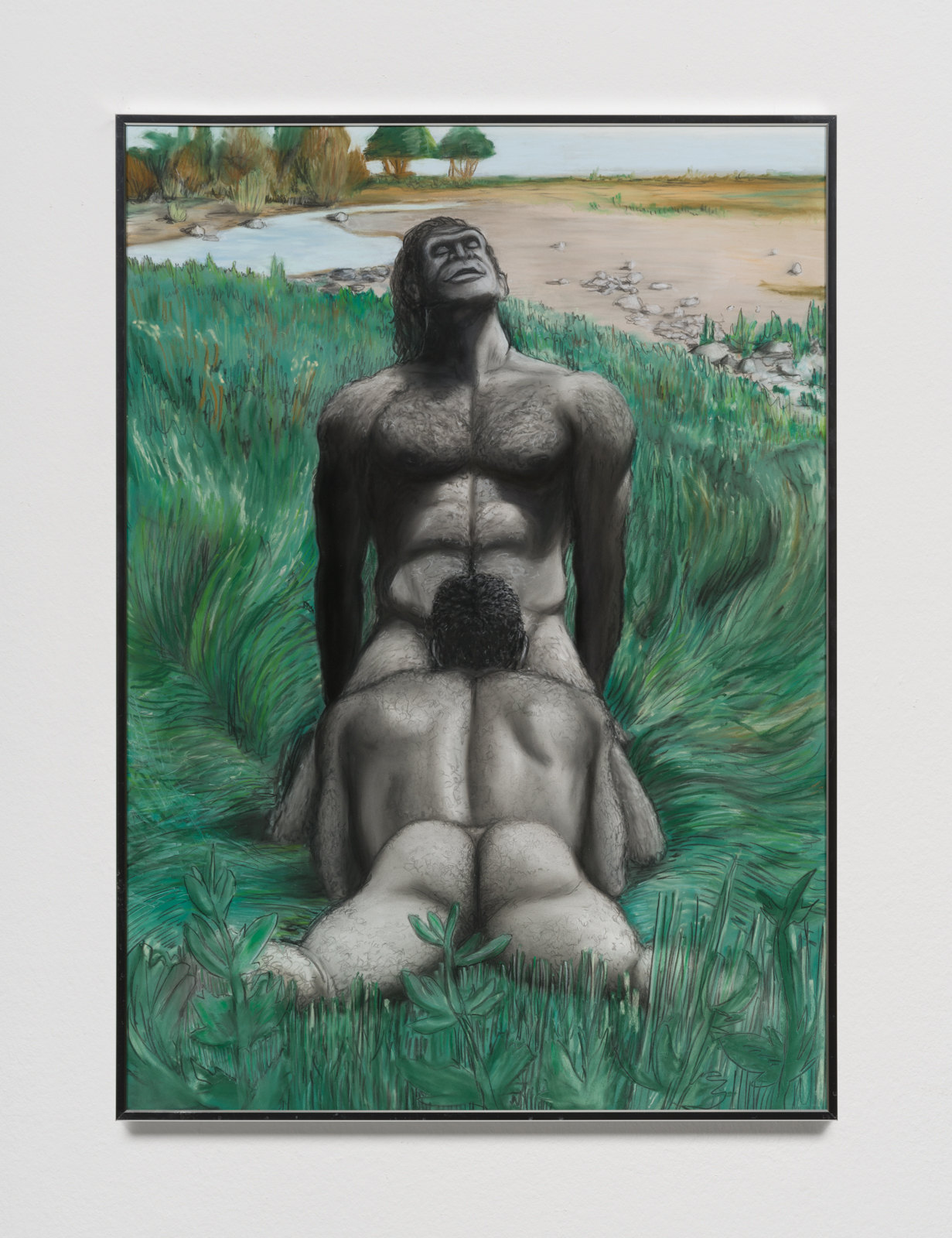
Myrups’s Homo Homo Erectus (In the Grass), [2018] Pastel on paper (50x70cm)
Animal Sexuality
This is an interesting distinction to make as Myrup specifically distances his discourse from Gorillas (the animal), preferring to make a link to the pre-human, post hominoid [post-ape], as if the humanity [intelligence] of the pre-human, [its cranial development] legitimises the sexual activity in which it partakes – through the possibility of love; something presumed absent in animal-animal intercourse . Armitage, however, explicitly tries[8] to couple together human and animal sexuality; becoming-animal, as if that intensifies the experience; as a primal activity; becoming in-tune with our ‘nature’ , ‘predisposition’ , or ‘being’ . For Bataille ‘Being… is primal and animal, but becomes focused and intensified in the act of breaking with social, religious, or moral norms‘ (Newall in Maes 218). A kind of apocatastasis[9].
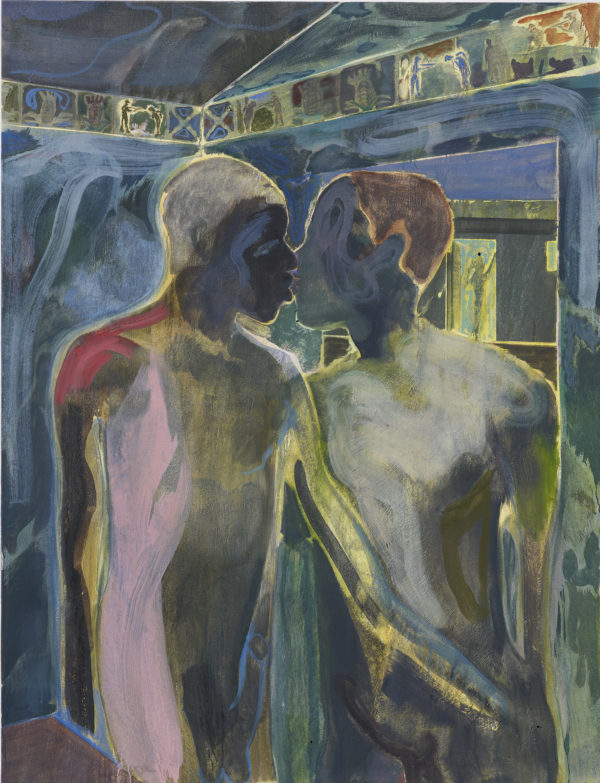
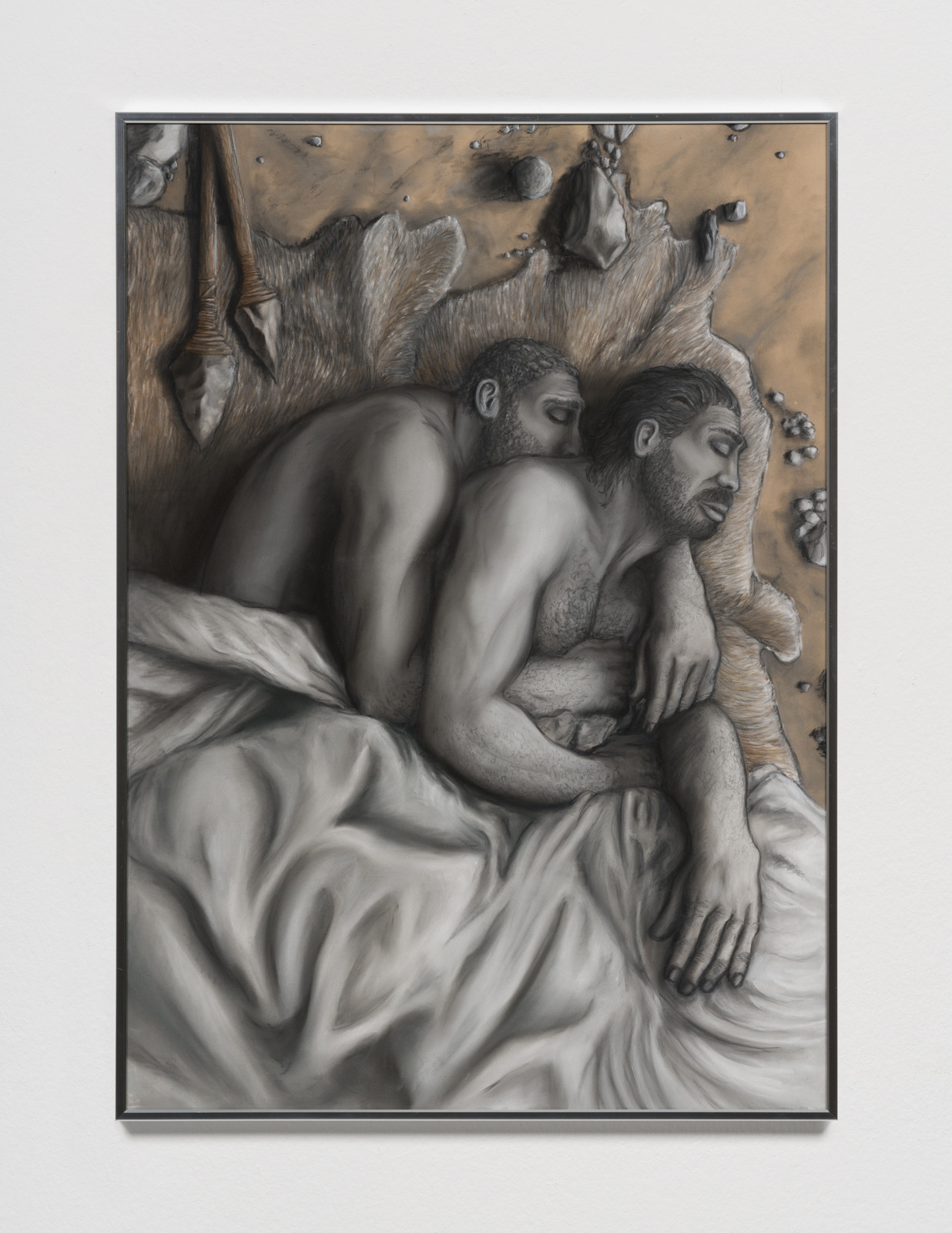
Myrups’s Homo Homo Neanderthalensis (Spooning), [2018] Pastel on paper (50x70cm)
‘Kampala Suburb (2014) portrays two men kissing in an interior setting, their tender pose, derived from an Egyptian hieroglyph , contrasting sharply with a wall frieze depicted above 10 them that shows scenes of an execution.’
Elizabeth Fullerton – Art in America (131,132)
Homosexuality in the Animal Kingdom
The documentation of homosexuality in animals is seen by many as extremely liberatory[11] as it put to rest any accusations that such behaviour was un-natural [contra nature]. This is deliberately referenced in the title of the 2006 exhibition ‘Against Nature?’ on homosexuality in animals at the Museum of Natural History[12].
Such a debate is, however, complex and convoluted as what is viewed as natural is often anything but[13]. What is natural is intensely bound up with the animal (nature); but what is considered natural often differs for the human; for whom the distinction is one of human nature as opposed to nature itself. What is natural for the human, therefore, is often socially prescribed[14]; for instance, reading books or monogamy, might be considered natural, as it is socially prevalent. Whereas defecating outside[15], while natural , in the sense that it is common in nature and, therefore, perfectly acceptable for an animal , would be seen as an unnatural activity for the human, as not prevalent socially.
Religion
While Armitage chooses to speak about religion directly, one feels as though Myrups action of repositioning homosexuality within a history from which it is conspicuously absent would not be necessary without the religious iconoclasm and condemnation that necessitated it…[16]
Sex and religion are intimately bound[17]; Armitage speaks to a highly conservative Kenya[18] that cannot control its own population within its religious strictures19. Myrups, on the other hand, tries to disrupt religious discourse with the scientific, just as Darwin disrupted it with his theory of evolution[20]. Hopefully, Myrups placing of the Homo Homo[21] within ‘Natural History’ will continue to confound religious ignorance, and change the current belief that homosexual acts are not only contra-nature; but against God[22] (sinful) . If God did indeed create us then such act’s would presumably be sanctioned; and religious texts deemed contradictory.
Homophobia and Colonisation
Religion has always participated in creating an inside/outside division of those who believe (insiders) and non-believers (outsiders); as such it simultaneously participates in the construction and destruction of (imagined) communities.
Anti-sodomy laws were enacted in East Africa by the British, prior to this Homosexuality was not illegal – Needham makes the case that it was prominent among Kenya’s previous religious leaders the ‘Mugawe’ (Eskridge 1460). This can be seen as part of the British plan to control and subjugate the population through the spread of Christian Values and propagation of the Christian Faith.
‘Colonial legislators and jurists introduced such laws, with no debates or “cultural consultations,” to support colonial control. They believed laws could inculcate European morality into resistant masses. They brought in the legislation, in fact, because they thought “native” cultures did not punish “perverse” sex enough. The colonized needed compulsory re-education in sexual mores. Imperial rulers held that, as long as they sweltered through the promiscuous proximities of settler societies, “native” viciousness and “white” virtue had to be segregated: the latter praised and protected, the former policed and kept subjected.’ Human Rights Watch ‘This Alien Legacy The Origins of “Sodomy” Laws in British Colonialism’. [2008] (5)
Peterson notes a link between adherence to religion and racist tendencies[23]. Religious fundamentalism has been linked to anti-homosexual bias[24]. Homophobia in a national context has been found to be determined by national religious attitudes, even in those citizens of the country that are not religious[25]. Passages from the Bible in particular the Mosaic Covenant and Old Testament serve as justification for laws in which homosexual activity is punished with death[26], which it is in Kenya[27].
For Berlant and Warner writing in Sex in Public[28] (1998), sex is ‘mediated by publics… official national culture, depends on a notion of privacy to cloak its sexualization of national membership.’[29] The aim of their paper like the work of both Armitage and Myrups, is to ‘promote as the radical aspirations of queer culture building: not just a safe zone for queer sex but the changed possibilities of identity, intelligibility, publics, culture, and sex that appear when the heterosexual couple is no longer the referent or the privileged example of sexual culture.’
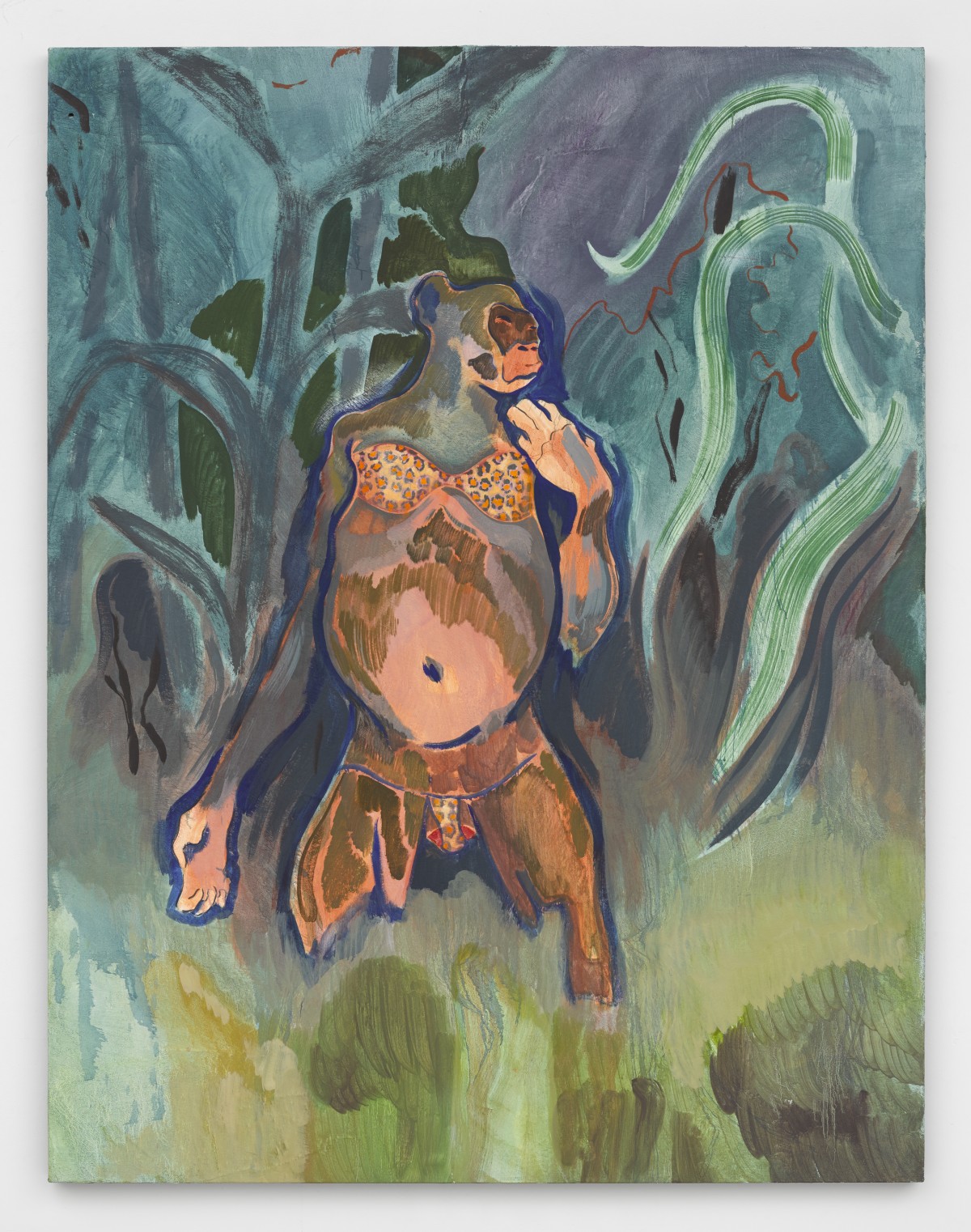
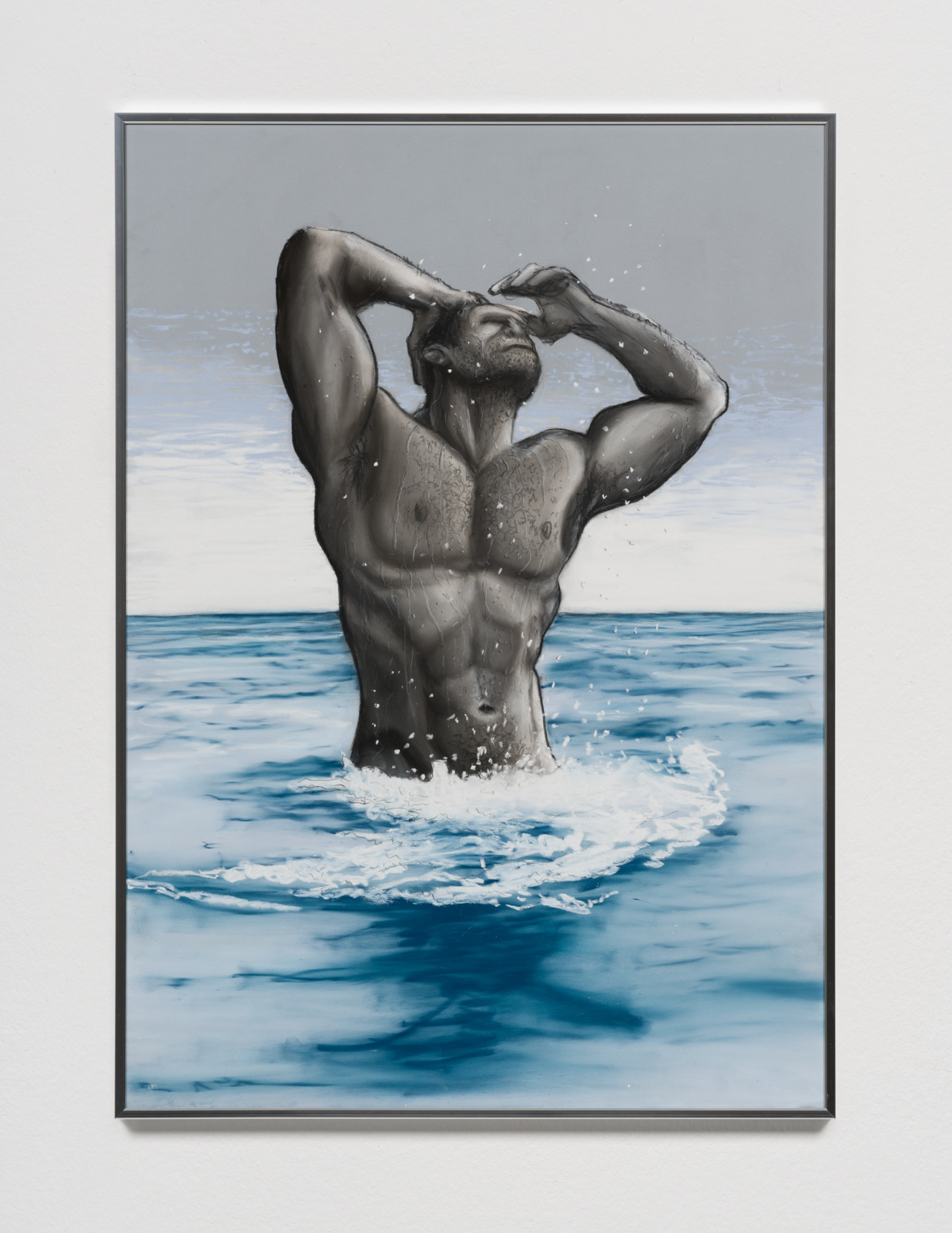
Myrups’s Homo Homo Habilis (Out for a Dip) [2018] Pastel on paper (50x70cm)
Pornography
The up-front semi-pornographic attitudes to sex, demonstrated by both artists are characteristic of Post Kinsey Report Sexuality and can be seen as part of a trend towards transparent sexuality in Art in general; either as a reaction to the increasing pornification of everyday life , or perhaps against an artificial opacity that prefigured such a[31] transition; itself the result of religious censorship.
‘Sexual experiences involve the deepest corners of ourselves and are among the most intense, powerful, emotional, and profound experiences we have. pornography, which offers the most direct representation of, and access to, such experiences, can in principle be lifted into the realm of art…then I think we have every reason to encourage artists to attempt just that, to make intense, powerful, and profound works of pornographic art and rescue this much-maligned genre from the clutches of the seedy porn-barons.’ (Maes 43)



Public Sex in Murillo Gardens: The Focus of a number of Armitage’s works: Presumably this to highlight that it is not only Homosexual Acts Christian-Conservative Kenya has difficulty controlling. [These pictures were published in Kenyan Daily Newspaper the Star causing national outrage.]
Porn, Privacy, Nakedness – The Human/Animal Division
Human Behavioral Biologist Dr Robert Sapolsky in an attempt to categorise[32] what differs between Human Sexual Behaviour and Animal Sexual Behaviour notes that it is Privacy that is one of very few differentiators that we can use to distinguish Human from Animal sexual activity. Much of what we assume about animal sexuality, is false; animals, masturbate, are Notions of privacy explored in Berlant and Warner’s (1998) Sex in Public[33], for whom ‘There Is Nothing More Public Than Privacy’. Sex for Berlant and Warner ‘is mediated by publics’, much in the same way as the ‘what is natural?’ debate discussed above, is a social construction; for Berlant and Warner the construction of ‘intimacy’ relies on privacy; quoting Habermas for whom ‘subjectivity, as the inner core of the private, was always oriented to an audience.’[34] What is private is then for Berlant and Warner dictated by what is public . In this case the title ‘Sex in Public’ doesn’t refer to ‘Outdoor Sex’ but the entire construction of sex in the public sphere, in books, films, culture and even in sex districts; and other ways sex is made material. They refer to ‘Drag’ , ’Parades’, ‘Flaunting’ and ‘Cruising’ as critical ways queer culture is made visible as liberatory practice. In their discussion on vibrators, brought up by a straight couple for whom ‘[they] were the only people [they could] talk to about this; to all of our straight friends this would make us perverts’, the role of queer sex in public takes on another role: to legitimise hetero acts that are not seen as heteronormative. For Berlat & Warner queer sex in public makes ‘nonstandard intimacies… seem less criminal’ legitimising relationships outside of the nexus of heterosexual power.
Shame in Nakedness: Derrida
‘It is generally thought … that the property unique to + animals and what in the final analysis distinguishes them from man, is their being naked without knowing it. Not being naked, therefore, not having knowledge of their nudity, in short without consciousness of good and evil.’ (373)
Part of the expulsion of Adam and Eve from the garden of Eden, involved the wearing of clothing. ‘The eyes of both of them were opened, and they knew that they were naked.’ Genesis 3:7
Clothing for Derrida is ‘one of the “properties” of man’ it distinguishes man from animal. For Derrida ‘The animal … doesn’t feel its own nudity. There is no nudity in nature’ (374)
Outdoor sex, like the kind depicted in Murilo Park can be seen as affirmation of animality[35], a return to nature, even to the garden of Eden – a world where good acts and bad acts did not exist as we weren’t aware of them, just as the animal isn’t aware of its nakedness[36].
Pornography can be seen in a similar way as lacking an awareness of morality or even forcefully agressing against it, in this sense it can be seen as animal. Much like Homosexuality, Pornography, Outdoor and other non-normative sexual acts become the focus of Religious Control, and for the subjugation of bodies See. ‘Kenya: Clergymen Hold Prayers to cleanse Murillo Gardens’[37].
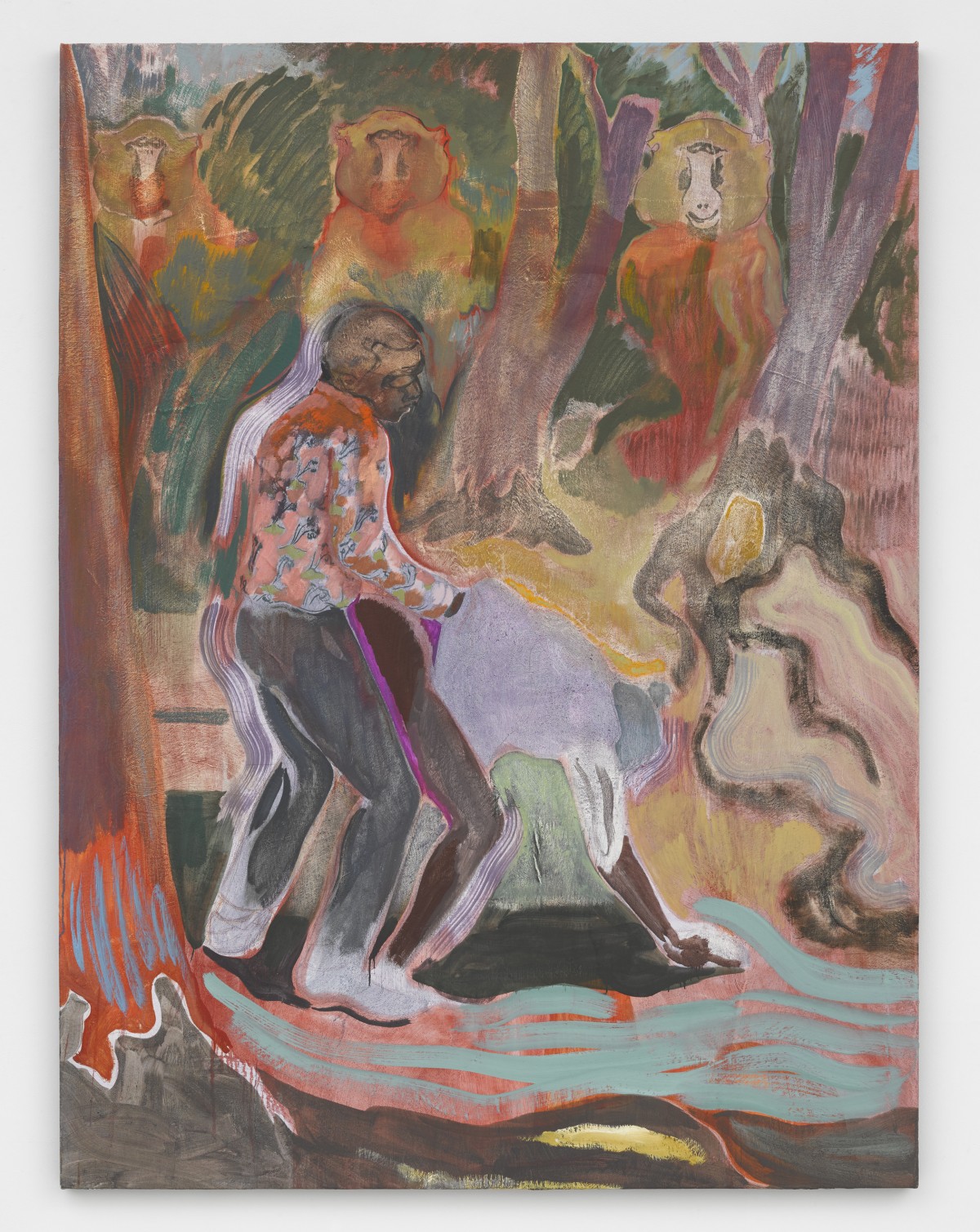
The pornographic doesn’t hide – it reveals all unashamedly and is, therefore, animal, just public sex is animal as it is outside[38]. Myrup constructs a bed outdoors, juxtaposing the human desire to be indoors with the animal that has no choice but to be outside.
Sex and Freedom
Public Sex for Armitage is exemplified in the copulation of Bonobo Gorillas. Queer animals both in their bisexuality and alternative mating habits, Bonobos ‘substitute sex for aggression’ and are known to ‘engage in sex in virtually every partner combination’ (Scientific American). The liberatory message in equating humans to Bonobos can be similar to the ‘Free Love’ movement in the 1960s . It carries with it an acceptance[39] of not just alternate sexualities but of all humanity. ‘Free Love’ was often misconstrued as an indictment to promiscuity, but really avocated that sexual relations of all kinds should not be regulated by law. Free Love is by many thought to have originated in the 1960’s but actually has its origins far earlier in the 19th Century[40]. The concept gained traction with Victoria Woodhull (1838–1927), the first woman to run for The United States Presidency. in 1872 who approached the issue from a Femimist Perspective, for whom the freedom to marry, divorce and bear children should be without social restriction or government interference. Divorce at the time was extremely scandalous and even today is still restricted[41]. Woodhull unlike Noyes and the ‘Free Love’ movement of the 1960s believed in monogamous relationships, however in the freedom ‘to love whom I may, to love as long or as short a period as I can; to change that love every day if I please, and with that right neither you nor any law you can frame have any right to interfere.’[42]
All Animals, including and not limited to the Bonobo, have no concept of Marriage – a concept overlaid onto our sexual practices by tradition. However, there are numerous cases of monogamy in animals, for instance, Grey Wolves, Beavers, and Swans. In contrast to the Bonobo, the Lar gibbon (Hylobates lar), another primate, is primarily monogamous, nevertheless as many as one in ten of their babies are sired by a male other than the female’s partner. This suggests[43] that monogamy and polyamory may not be the polar opposites we assume them to be. Each may have its own merits, a time and a place, or perhaps each is present in varying degrees – further study of the Animal Kingdom will no doubt have enlightening and liberatory consequences when it comes to the conversation surrounding, and ultimately the legitimisation of our own much maligned sexual practices and proclivities[44].
Unsheathed: Nudity as Weapon
The nude in art has long been mobilised to create ‘shock and awe’, Mark Twain once called Titian’s Venus of Urbano (1538) ‘the foulest, the vilest, the obscenest picture the world possesses.’ It is only fitting then that it inspired both Edouard Manet’s Olympia[45], and Velazquez’ Rokeby Venus46 the inspiration for Michael Armitage’s #mydressmychoice.
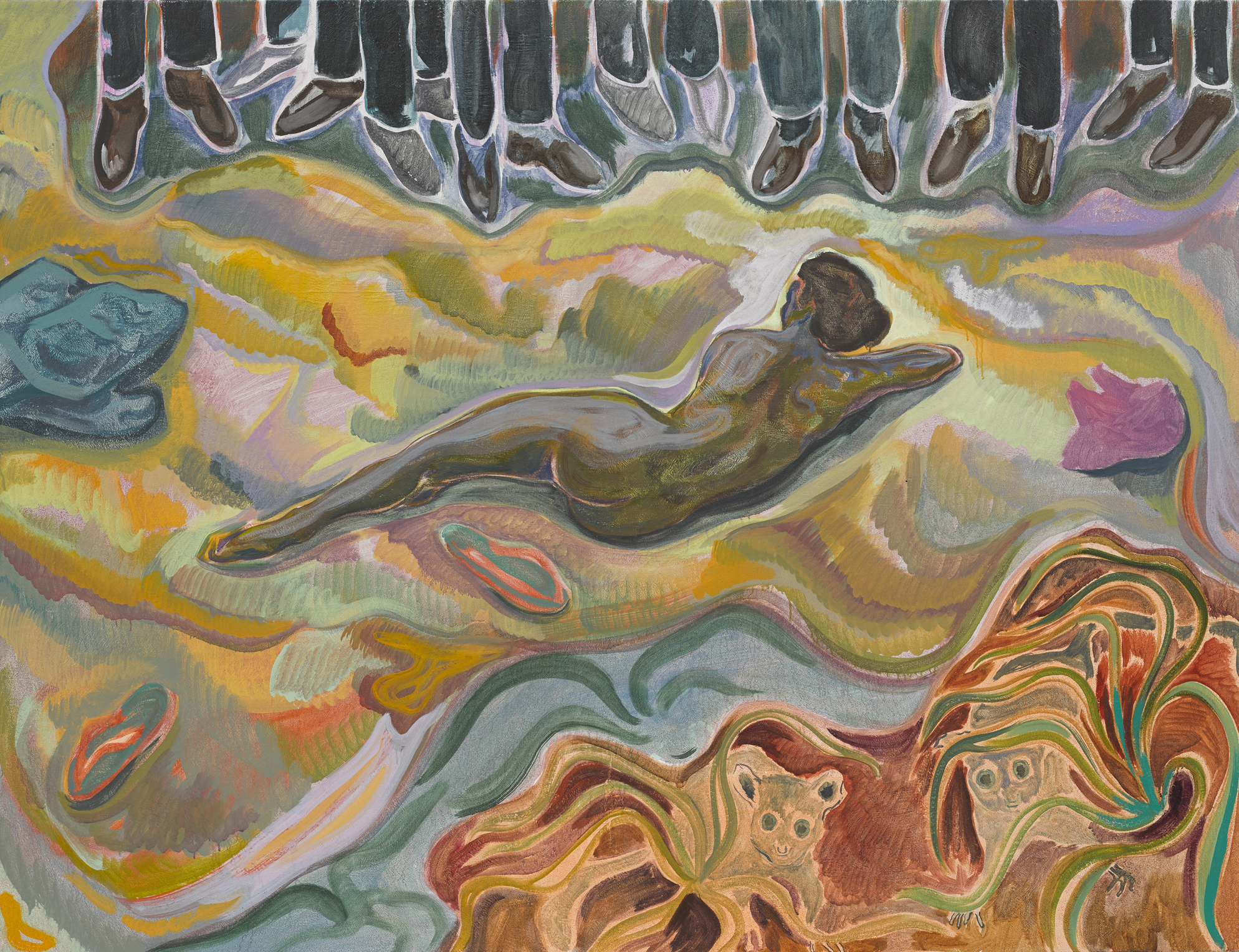
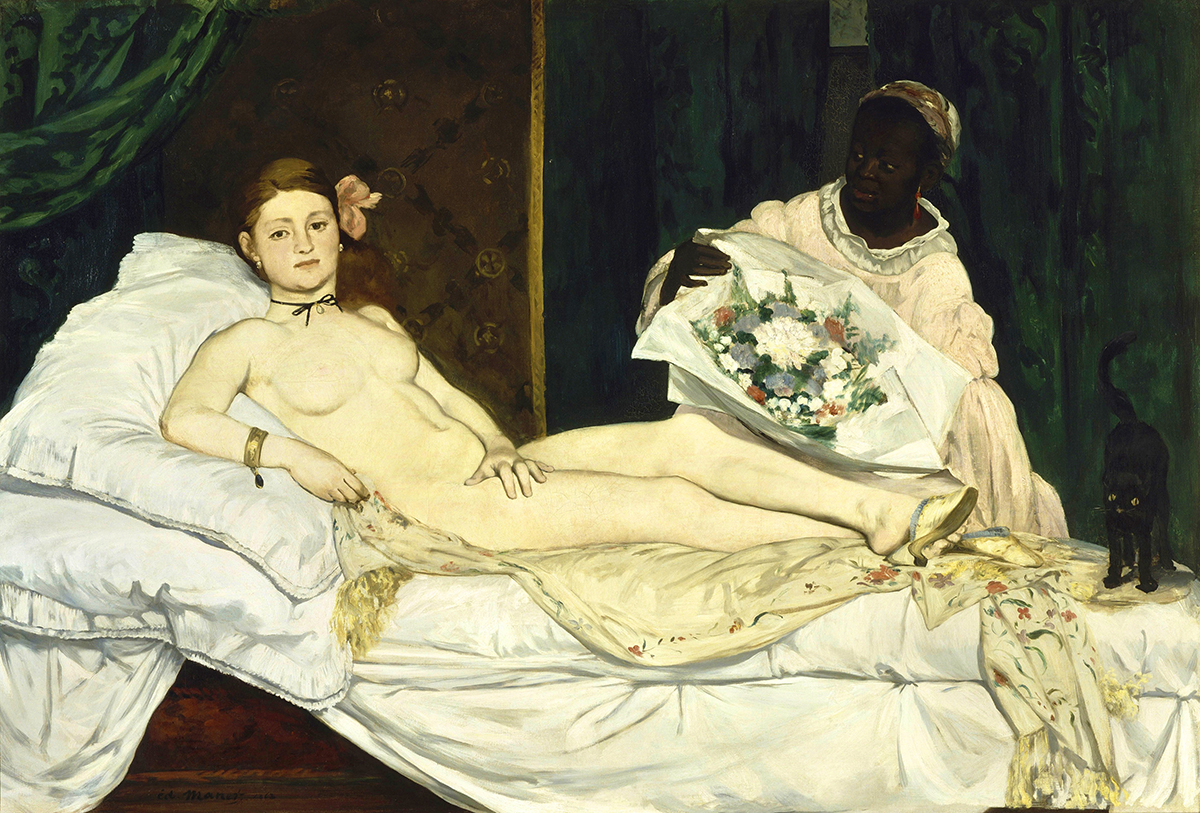
Armitage’s #mydressmychoice47 [2015] Oil on Lubugo Bark (149.9×195.6cm) and,
Manet’s Olympia [1863] Oil Paint (130.5x190cm)
Is it a coincidence there are very few female nudes in Armitage’s work[48]? Or does he do this to avoid participation in Exocticism and Orientalism? The kind of which is discussed by both Bolton & Behad? He is very critical of Gauguin; to avoid further objectification and exploitation through fantasy he focuses on the male nude as absent of the kind of signification and exposure inherent in depictions of the female[49].
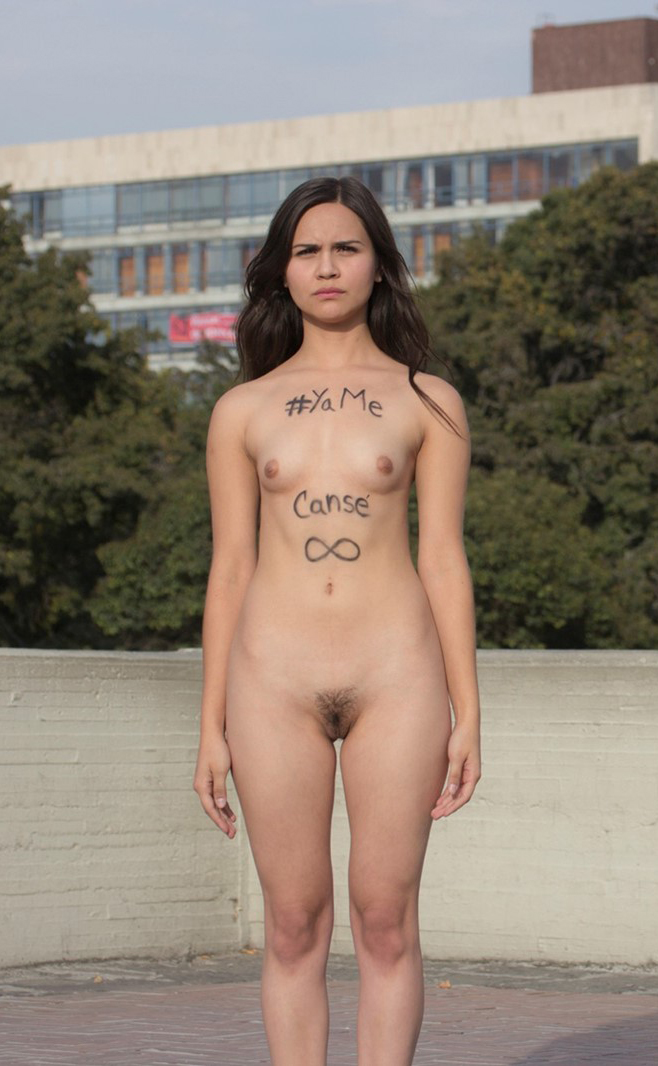
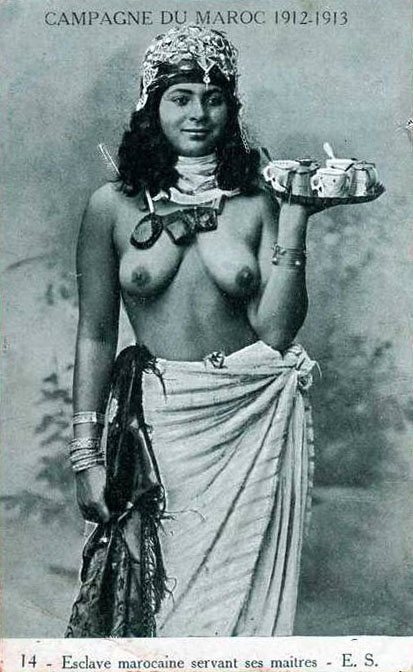
“Ya me canse” (I am tired) [L] and,
a ‘French Postcard’ depicting a Moroccan Slave serving her master [R] 50
How is nudity in one context, objectifying and yet in another liberating?
In Civilization and its Discontents, Freud famously observed that ‘the genitals themselves, the sight of which is always exciting, are hardly ever regarded as beautiful’ (1961: 83). From this, it seems to follow that ‘we only get beauty if we do not depict the site of sexual pleasure directly’ (Danto 82).[51]
If we take into consideration what is offered by Scruton qtd. In Maes ‘The pornographic image is like a magic wand that turns subjects into objects, people into things and thereby disenchants them, destroying the source of their beauty’ [21]. We cannot therefore forget that any lense, is equally capable of ‘objectification’ and ‘exploitation’; terms which for Maes are most often used to describe what is wrong with pornography. The Colonial Gaze is equally capable of both ‘objectification’ and ‘exploitation’ in equal measure as seen in the orientalist photograph, and works by Gauguin[52] of which Armitage is critical. Mobilizing pornagraphy in this case as humanising discourse can then in this case take on the role of liberatory practice, take for instance a work such as Barkley L. Hendricks ‘Family Jules: NNN (No Naked Niggahs) 1974, mobilising a discourse of race surrounding the Black Nude (Arabindan-Kesson) in a similar way to the way Egon Schiele[53] instigated, or staked a claim, for the male nude as being an object of beauty[54]. Here we come to a crucial distinction, Schiele’s male nudes when first exhibited were viewed as pornography; obsentity[55]. But their format; the painting, allowed them to be read in a separated discourse to the photographs circulating at the time[56], positioning them to a wider audience capable of recognising their beauty beyond the pornograpic, that is to say, seeing a certain innocence or empathy in relation to the unclothed figure; ‘Seeing him for all that he is’ – NAKED. The impossibility of lying or fakery surrounding the nude imparts a quality of truthiness, impossible in the realm of art as illusion or storytelling. The Nude and the naked carry with them an objective honesty, similar to a coming face to face; ‘bearing all’. Fragility[57].
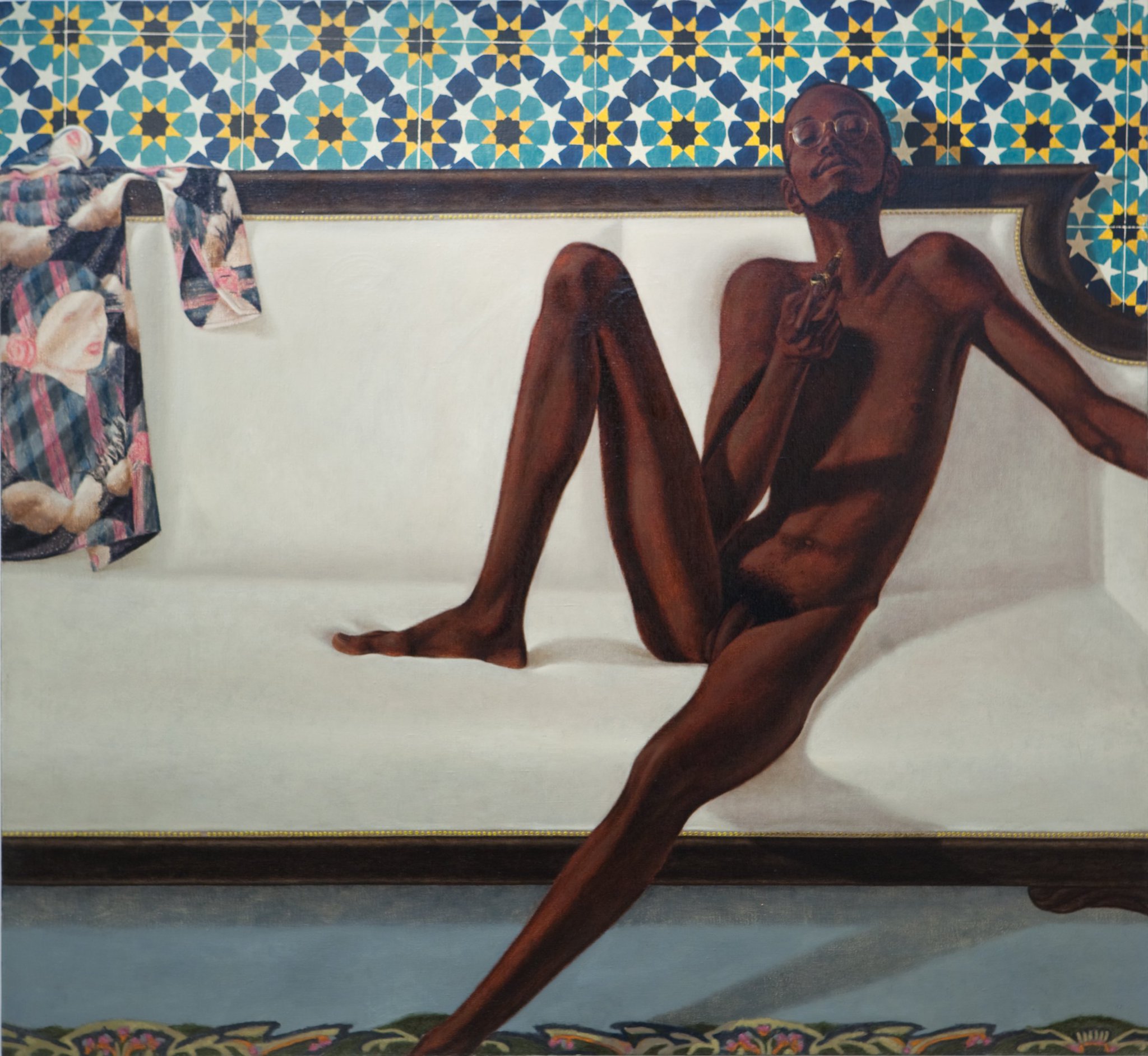

Hendrick’s Family Jules: NNN (No Naked Niggahs) [1974] Oil on Linen (168.1×183.2cm) and,
Schiele’s Seated Male Nude (Self Portrait) [1910] Oil on Canvas (152.5x150cm)
‘Stripping down demonstrates willingness and, therefore, purposeful vulnerability. ‘”naked people … can never make war”.
Nudity renders everyone equal, and that equality resolves conflict.’ (Brownie)
‘Nudity is not nakedness it is a form of dress.’ [58]
For Scruton in Maes ’Sexual desire in its fullest and most fulfilling form is, he argues, ‘a desire for a person, someone who confronts me eye to eye and I to I’ (20) . But is this not the fullest and most fulfilling form of all aspects of life? Finding a match with whom one can experience both sameness and difference simultaneously and delight in each to the point of orgasm. What therefore does this say about Hendrick’s Nude or Schiele’s Nude, does their nudity invite the possibility that such an experience could happen with either one of them?
What Adam Phillips terms a ‘flirtation’ (4)? Or is something much deeper happening here, done in their nudity, each proposing the possibility of engaging in this experience with another – experiencing in kind the most human act of all of humanity: Love, and do we then empathise and huminise the dehumanised? Returning to the blind sexuality of animals? Pettman proposes ‘love is intrinsically and inescapably “creaturely”’ (2) a return to the nakedness of the animal could signal a return to the naked love of the animal? For Berlant however ‘love is what happens to desire when it is obliged to adhere to the cultural forms and understandings that have been explicitly designed to capture and control this unstable force or phenomenon’ [Paraphrased by Pettman 2] does the sexual desire mentioned above then carry with it a kind of implicit purity?
Animality and Forgiveness
Does recognising each other instigate the possibility of forgiveness? To say the common phrase , ‘Your only human after all’ is really to say, you, human as animal are animal as I am are mere mortal capable of making mistakes and my recognition of you and I a ‘in kind’ bestows upon you the kind of affordances i bestow upon my self as I recognise myself to be animal.
Of course, there’s purity, innocent and truth in the naked body, but just like the separation between art and pornography, there is violence. The enforcement of[59] ‘decency laws’ at its weakest or most liberal form in ‘indecent exposure’ and its most stringent in rigidenforcement of wearing of the burqa. Nudity and nakedness, or rather clothing plays a vital role in the control and discipline of bodies see. Foucault (1976) The History of Sexuality. Nudity is, therefore, not just about fragility, but also about strength[60].
Racism and The Animal
For Christopher Peterson writing in Bestial Traces, there is a ‘longstanding racist association of blacks with apes’ (1), Armitage finds this humorous and not at all problematic, he believes the association of blacks with apes in his work are largely down to the viewers’ interpretation of his juxtaposition of images. While Armitage’s images can be read metaphorically; they can, he believes, and insists they should be;taken literally[61]. In which case the gorillas, are just gorillas i.e. non representational[62].
This is a view concurrent with Peterson for whom, ‘this is not to say that sometimes a monkey is just a monkey, that we might restrict the scope of its significations. It means, rather, that there is no limit to what a monkey might signify’. The possibilities of multiple reading with his work are numerous. Armitage is well aware of the readings he provokes; he delights in the sensuality of the animal, especially as it relates to the erotic, which may, or may not, necessarily, be tied to race at all; and could be positive. Armitage, moreover, takes a similar line to Spiegel who asks, ‘Why is it an insult for anyone to be compared to an animal?’ signalling a return to a primordial Linnaeus-like view, critical of our own epistemology and historiography, and more in tune with our own existential humanity/animality dualism.
The Decolonialised Gaze
One cannot as Peterson says ‘expect racially … to forget the prolonged history of their dehumanization’ as if to say, “We are all animals, so get over it!”’ But, it is taboo that gives Armitage’s work its political poignancy, be it ‘racism, bestiality, sexism, violence or homosexuality’[63] (and prostitution)[64].
The allusions to the ‘longstanding racist[63] [64] association of blacks with apes’ by Armitage allow us to address colonial histories and attitudes that may, despite our best efforts to correct them, still be prevalent, just as anti-homosexual attitudes are still prevalent in Kenya. ●
1 Referencing work such as Urs Fischer’s You (2007); a reaction against Brian O’Doherty’s concept of the White Cube. See, http://nymag.com/arts/art/reviews/41266/
2 Queering prehistory through Speculative Fiction and the creation of Alternate-Histories, questioning the museum’s legitimation in knowledge production. See. Addendum, Edouard-Henri Avril’s depictions of love in Ancient Egypt (1800s).
3 His work with bark suggests that a relationship with nature that preserved the traditional could be constructive. The method used to strip the tree of its bark keeps the tree alive, unlike in paper manufacturing. Past confluences with nature are sustainable. Lost skills are representative of our lost animality, in which plants were primary tools and the built environment consisted of nature exclusively; of which we have become somewhat detached. A similar connection to nature is revealed in Myrups work, where a bed is constructed of plant and animal material.
4 https://whitecube.com/exhibitions/exhibitio/michael_armitage_hong_kong_2017
5 https://www.youtube.com/watch?v=0m3cpIl1Ei4 (3:00) ‘Enabling him to avoid references to German Expressionist painting if he made an expressionist mark.’ Where Myrup wants to position his work within a western tradition; natural history. Armitage, wants to position his work outside of a western tradition; art history.
6 Hominoids, however, include Both Humans and Apes. See header
7 Therefore, here is conditioned upon a logical understanding of our own subjective experience; the animal ‘I was’ or the animal ‘I can return to’.
8 Robert Sapolsky, Human Behavioral Biology – Human Sexual Behavior 1; [05/05/2010] Stanford.edu: [https://www.youtube.com/watch?v=LOY3QH_jOtE]
9 Apocatastasis is a reconstitution, restitution, or restoration to the original or primordial condition.
10 Note how Armitage like Edouard-Henri Avril attempts to situate homoxexual love in ancient Egypt, as if we can return to a time in which it was socially acceptable, See. Richard Parkinson: Homosexual Desire and Middle Kingdom Literature . In: The Journal of Egyptian Archaeology (JEA) , vol. 81, 1995, pp. 57–76.
11 Bagemihl, Bruce (1999). Biological Exuberance: Animal Homosexuality and Natural Diversity. St. Martin’s Press Bagemils reinterpretation of the quote “The universe is not only queerer than we suppose, it is queerer than we can suppose.” by Evolutionary Biologist B.S. Haldane (1892-1964), creating an alternate history playing on the changing definition of queerness overtime through double entendre.
12 The first exhibition of its kind; Natural History Museum, University of Oslo , Norway.
13 See. Skalko, J. (2015), Is Sodomy Against Nature? A Thomistic Appraisal. Hey J, 56: 759-768. doi:10.1111/heyj.12246
14 Such distinctions are made evident in Aquinas’ Natural Law Theory (1225-1274).
15 ‘Does a Bear Sh*t in the woods?’ es; a nonsense retort used as an affirmative answer to a silly question, often sarcastic US, 1971 Often mixed with the synonymous “Is the Pope Catholic?” toachieve Does the Pope Sh*t in the woods?’ p230 The Routledge Dictionary of Modern American Slang and unconventional English / edited by Tom Dalzell. Second edition. | Milton Park, Abingdon, Oxon : New York : Routledge, [2017]
What the question here is actually asking is not does a bear shit in the woods but what makes a bear a bear. Is the bear an animal? In which case it sh*ts outside.
16 Science is the antidote to religion – Certain Christians don’t believe in the pre-human (evolution) let alone homosexuality in the pre-human-for them this work must be particularly challenging.
17 Within this domain The Church appears to hold a greater power over morality than even the law.
18 ‘Kenyan society is highly conservative, and a large majority of people hold negative views of LGBT people. Homosexuality is ” largely considered to be taboo and repugnant to [the] cultural values and morality ” of Kenya.’ “List of issues to be taken up in connection the consideration of the third periodic report of Kenya”, United Nations Human Rights Committee, 103rd session, Geneva, 22 November 2011, CCPR/C/KEN/3, paragraph 26, page 5 (http://www2.ohchr.org/english/bodies/hrc/docs/CCPR.C.KEN.Q.3_en.pdf)
19 Opposition to same-sex marriage and LGBT rights is often associated with conservative religious views.
20 Arguably Darwin’s theories made the single largest contribution weaken the force of religion in society.
21 A double-entendre intended to mean Same Same and at the same time Homosexual Homo Erectus/Homo Neanderthalensis http://tranen.nu/show/homohomo/
22 Leviticus 18:22 “and with a male, you [singular masculine] shall not lie [sexually] as with a female, that is an abomination.”
23 Peterson, Christopher. Bestial Traces : Race, Sexuality, Animality. New York: Fordham UP, 2013.
24 McDermott, Ryon C.; Schwartz, Jonathan P.; Lindley, Lori D.; Proietti, Josiah S. (2014). “Exploring men’s homophobia: Associations with religious fundamentalism and gender role conflict domains”. Psychology of Men & Masculinity. 15 (2)
25 Adamczyk, Amy (2017). Cross-National Public Opinion about Homosexuality: Examining Attitudes across the Globe. University of California Press. pp. 17–18. ISBN 9780520963597.
26 Leviticus 20:13; Genesis 19:4-25; Judges 19:22-20:48; 2 Peter 2:6-10; Jude 7
27 Lesbian, gay, bisexual, and transgender (LGBT) persons in Kenya face legal challenges not experienced by non-LGBT residents. Sodomy is a felony per Section 162 of the Kenyan Penal Code, punishable by 14 years’ imprisonment, and any sexual practices between males (termed “gross indecency”) are a felony under section 165 of the same statute, punishable by 5 years’ imprisonment, these sections are being challenged in court, with a ruling scheduled in May 24, 2019. The state does not recognise any relationships between persons of the same sex; same-sex marriage is banned under the Kenyan Constitution. There are no explicit protections against discrimination on the Adoption is prohibited to same-sex couples.
28 Critical Inquiry, Vol. 24, No. 2, Intimacy. (Winter, 1998), pp. 547-566.
29 ‘The institutions (such as marriage and the family) that bestow national membership are implicitly organized around, and uphold, the norm of heterosexuality.’ Young, Damon R. Making Sex Public and Other Cinematic Fantasies, 2018.
30 Dior’s ‘Africaine’ Dress [1947] was the first to use leopard print in modernity followed by Norell & Balmain (Bolton 123), since its inception, the animal in fashion has been deeply raced. ‘Attributions of animalistic traits to women were especially prevalent in fin de siecle art, Encouraged by the period fascination with Aestheticism and Orientalism’ (130) But the use of Leopard goes back to Ancient Egypt See. Stella of Princess Nefret-Iabet ca. 2551-2528 B.C.
31 ‘The distribution of and access to pornography has been facilitated immensely by the internet, and pornography has acquired a growing presence in and influence on contemporary culture—a process that is usually described as “the pornification of society.” Many music videos and advertising campaigns now eagerly copy the groaning and grinding aesthetics of pornography.’ Maes & Levison (1) Armitage clearly references this in his depiction of a Baikoko Dancers twerking – Nasema Nawe (2016) influenced by Diamond Platnumz Music Video of the Same Name (2015) [https://www.youtube.com/watch?v=moE_dXt6-CQ] .
32 Stanford University Lecture Recording, BIO 150: Human Behavioral Biology (Spring 2010) https://youtu.be/LOY3QH_jOtE
33 Critical Inquiry, Vol. 24, No. 2, Intimacy. (Winter, 1998), pp. 547-566.
34 Animals can’t ‘kiss-and-tell’.
35 Peterson notes the association between sexuality and animality can be traced back as far as Cicero.
36 For Bolton (13) ’ We have journeyed back to in our search for sartorial rebirth to the Garden of Eden. Revealing a postmodern paradox the endless archaeology of fashion has extended to prehistory, with fashion looking to the very origins of our species in its continuing impulse forward’ Explicit sexuality paradigm is encouraged ‘The image of the prehistoric huntress has been… reshaped and refashioned to reflect contemporaneous ideals of beauty and sexuality’ (15) A world without morality is encouraged as it allows for rampant sexual expression, Savagery is akin to succumbing to ‘expressive urges’ (150)
37 https://allafrica.com/view/group/main/main/id/00012983.html
38 ‘Does a Bear Sh*t in the woods?’ The outside is the domain of the animal; the wild. See 15
39 The whos ‘Rebel Yell’ was ‘Make love not war’ [1964] analogous to the position of the Bonobos.
40 John Humphrey Noyes the originator used Matt. 22:30 for Spiritual Justification ‘In the resurrection they neither marry nor are given in marriage, but are like the angels in heaven’ and built a community (Oneida 1848) on the concept he termed ‘Complex Marriage’ meant having multiple partners. Noys believed the propagative and the amative functions of sex could be separated – in his case by Male Continence [Controled Ejaculation], his views were extremely controversial at the time.
41 You can only get a divorce in England and Wales if you have been married for at least a year and can prove that your relationship has permanently broken down, either because of adultery, behavior, desertion, or you have been living apart for more than 2 years and both agree to the divorce, or living apart for at least 5 years, even if your husband or wife disagrees.
42 Victoria C. Woodhull (1871) And The Truth Shall Make You Free: A Speech On The Principles Of Social Freedom.
43 Sommer, V.; Reichard, U. (2000). “Rethinking Monogamy: The Gibbon Case”. In P. Kappeler (ed.). Primate Males. Cambridge: Cambridge University Press. pp. 159–168.
44 Marilyn Yalom makes it clear in the ‘History of The Wife’ [also the title of her book] that monogamy has never really meant what it on the tin. ‘In biblical days, a Hebrew husband was allowed to have morethan one wife. ’ (3) In ancient greece ‘they could find supplemental sex beyond the marriage bed with concubines, male and female slaves, male and female prostitutes, and male and female lovers.’ (19) And in Ancient Rome, ‘“ Chaste” for a husband may have merely meant that he conducted himself discreetly.’ Infidelity clearly happened on both sides however Yalom makes it clear that men’s dalliances were treated as indiscretion but for women consequences were far more severe.
45 What shocked contemporary audiences was not Olympia’s nudity, nor the presence of her fully clothed maid, but her confrontational gaze and a number of details identifying her as a demi-mondaine or prostitute. Clearly what is most significant today is the oppositional gaze of the maid discussed at length in O’Grady, Lorraine. ‘ Olympia’s Maid: Reclaiming Black Female Culture Reader. pp. 174–187. Michael Armitage often borrows form Manet, for instance Exorcism, 2017’s composition pays homage to Edgar Dega’s Young Spartans Exercising, while the colour scheme borrows from Edouard Manet’s Music in the Tuileries Gardens See. https://tankmagazine.com/tank/2018/01/michael-armitage/ for art historical influences on Armatige’s compositions.
46 Interestingly a woman named Mary Richardson attempted to destroy it in 1914 she said that she destroyed the picture because she didn’t like the way men visitors gazed at it all day long.
47 Also allusions are made to Velazquez’s Rokeby Venus (1647-51)
48 An exception being Mangroves Dip (2015) which recreates Titian’s Flaying of Marsyas (1570-76)
49 I would argue that the male nude is no longer absent of the objectifying gaze, however to a far lesser extent at the moment. However, this is something I expect to become more prevalent rather less so See Rohlinger, D.A. Eroticizing Men: Cultural Influences on Advertising and Male Objectification. Sex Roles 46, 61–74 (2002).
50 A Picture of Protest, “Ya me canse” (I am tired [https://www.dazeddigital.com/artsandculture/article/23550/1/mexico-stages-radical-nude-protest-formissing-43-students] alongside a French Postcard depicting a Moroccan Slave serving her master. Published by Aqua-Photo L.V.S. est. 1905
[https://commons.wikimedia.org/wiki/Category:Aqua-Photo_L.V.S.]
51 For Dumas ‘ the pornographic’ is the ‘tendency to reveal everything’ the erotic on the other hand is ‘inclination to hide what it is all about.’ [.tate.org.uk/art/art-and-pornography]
For Bovens also in Maes ‘Thus, art reveals in concealing, whereas pornography conceals in revealing’
52 D’où Venons Nous / Que Sommes Nous / Où Allons Nous (Where Do We Come From? What Are We? Where Are We Going?) 1897; Spirit of the Dead Watching (1892);
53 https://news.artnet.com/exhibitions/egon-schiele-red-men-gay models-1358626
54 Nb. The transgender nude and intersex nude are also absent from a mainstream art historical narrative.
55 In 1912, Schiele was charged with public immorality for distributing obscene drawings, which saw the artist spend 24 days in custody.
56 ‘New scholarship has found that Egon Schiele’s male nudes from 1910, known as his “Red Men,” are not, as has long been assumed, self portraits. Instead, they most likely depict the artist’s gay friends.’ https://news.artnet.com/exhibitions/egon-schiele-red-men-gay-models-1358626
57 “Power is opposed not simply by the presence of people, but by emphasising their corporeal fragility and contrasting it with mechanised brutality of war machines, or by juxtaposing vulnerability of the individual against the might of an opposing army. It is with this intention, that “nudity is strategically employed as a mode of social and political action”. https://www.theguardian.com/fashion/costume-and-culture/2014/jan/15/naked-protest-revolutionary-body
58 “To be naked is to be oneself. To be nude is to be seen naked by others and yet not recognized for oneself. A naked body has to be seen as an object in order to become a nude. ( The sight of it as an object stimulates the use of it as an object.) Nakedness reveals itself. Nudity is placed on display. To be naked is to be without disguise.To be on display is to have the surface of one’s own skin, the hairs one’s own body, turned into a disguise which, in that situation, can never be discarded. The nude is condemned to never being naked. Nudity is a form of dress.” John Berger (54)
59 There is a real violence to the nude, people often refer to the genitals of men and women as ‘weapons’ and vice-versa weapons, guns for instance, are often seen as phallic symbols.
60 See Pussy Power, Pussy Riot, et cetera.
61 ‘This is not to say that sometimes a monkey is just a monkey, that we might restrict the scope of its significations. It means, rather, that there is no limit to what a monkey might signify’ Peterson (5)
62 Non-representational here not as it relates to abstract art and the representational/non-representational art dichotomy rather in relation to the work of Thrift, Dewsbery and McCormack, in which describes practices of “witnessing” that produce “knowledge without contemplation”, “First, it valorizes those processes that operate before… conscious, reflective thought… [and] second, it insists on the necessity of not prioritizing representations as the primary epistemological vehicles through which knowledge is extracted from the world”. McCormack, Derek (2005). “Diagramming Practice and Performance”. Society and Planning. Retrieved 1 January 2015.
https://en.wikipedia.org/wiki/Non-representational_theory
63 One could as Peterson dictates ‘catalogue a seemingly endless list of examples whereby animality converges with hierarchies of gender, class, nation, ethnicity, sexuality’ (7,8) and it seems Armitage does.
64 Which Peterson fails to touch on.
Anna Arabindan-Kesson, ‘The Painting ’, in Anna Arabindan-Kesson (ed.), In Focus: Family Jules: NNN (No Naked Niggahs) 1974 by Barkley L. Hendricks, Tate Research Publication, 2017, https://www.tate.org.uk/research/publications/in-focus/family-jules/the-painting, accessed 28 April 2019.
Armitage, Michael . “Artist Talk- 2017-01-16 – Hong Kong” YouTube, YouTube, 17 Jan. 2017, www.youtube.com/watch?v=0m3cpIl1Ei4.
“Aqua-Photo L.V.S.” Aqua-Photo L.V.S. – Wikimedia Commons, commons.wikimedia.org/wiki/Category:Aqua-Photo_L.V.S. Web.
Bagemihl, Bruce (1999). Biological Exuberance: Animal Homosexuality and Natural Diversity. St. Martin’s Press. Print.
Berger, John, and British Broadcasting Corporation. Ways of Seeing. London: Penguin, 2008. Print.
Berlant, Laurent ; Michael Warner. Sex in Public, Critical Inquiry, Vol. 24, No. 2, Intimacy. (Winter, 1998), pp. 547-566.
Bolton, Andrew, Shannon. Bell-Price, Elyssa. Da Cruz, and Metropolitan Museum of Art. Wild : Fashion Untamed. New Haven: Yale UP, 2004. Print.
“Bonobo Sex and Society” in SA Special Editions 16, 3s, 14-21 (June 2006) doi:10.1038/scientificamerican0606-14sp
Brownie, Barbara. “Naked Protest and the Revolutionary Body.” The Guardian, Guardian News and Media, 15 Jan. 2014,
www.theguardian.com/fashion/costume-and-culture/2014/jan/15/naked-protest-revolutionary
-body.
Danto, Arthur Coleman. The Abuse of Beauty: Aesthetics and the Concept of Art. Chicago: Open Court, 2003.
Dazed. “Mexico Stages Radical Nude Protest for Missing 43 Students.” Dazed, 10 Feb. 2015,
www.dazeddigital.com/artsandculture/article/23550/1/mexico-stages-radical-nude-protest-for-missing-43-students. Web.
Eskridge, William N. “A History of Same-Sex Marriage.” Virginia Law Review, vol. 79, no. 7, 1993, pp. 1419–1513. JSTOR, www.jstor.org/stable/1073379
Gupta, Alok, and Scott Long. This Alien Legacy: the Origins of “Sodomy” Laws in British Colonialism. Human Rights Watch, 2008. Web.
“’Homo Homo’ by Rasmus Myrup at Tranen.” OFluxo, 17 Oct. 2018,
www.ofluxo.net/homo-homo-by-rasmus-myrup-at-tranen/
‘Homosexual Desire and Middle Kingdom Literature.’ In: The Journal of Egyptian Archaeology (JEA), vol. 81, 1995, pp. 57–76. Web.
“Kenya: Clergymen to Cleanse Muliro Gardens.” AllAfrica.com, 13 Apr. 2011, allafrica.com/view/group/main/main/id/00012983.html. Web.
“List of issues to be taken up in connection with the consideration of the third periodic report of Kenya” , United Nations Human Rights Committee, 103rd session, Geneva, 22 November 2011, CCPR/ /KEN/3, paragraph 26, page 5 ( http://www2.ohchr.org/english/bodies/hrc/docs/CCPR.C.KEN.Q.3_en.pdf ) Web.
Lykkeberg, Toke. “Rasmus Myrup.” Tranen Museum, 29 Aug. 2018, tranen.nu/show/homohomo/. Web.
Maes, Hans, and Jerrold Levinson. Art and Pornography Philosophical Essays. Oxford: Oxford University Press, 2015. Print.
Peterson, Christopher. Bestial Traces : Race, Sexuality, Animality. New York: Fordham UP, 2013. Print
Pettman, Dominic. Creaturely Love: How Desire Makes Us More and Less than Human. Minneapolis: University of Minnesota Press, 2017. Print.
Phillips, Adam. On Flirtation. London: Faber, 1995. Print.
Robert Sapolsky, Human Behavioral Biology – Human Sexual Behavior 1; [05/05/2010] Stanford.edu : [https://www.youtube.com/watch?v=LOY3QH_jOtE] Web.
Saltz, Jerry. “’You,’ by Urs Fischer” New York Magazine, New York Magazine, 21 Nov. 2007, nymag.com/arts/art/reviews/41266/. Web.
Skalko, J. (2015), Is Sodomy Against Nature? A Thomistic Appraisal. Hey J, 56: 759-768. doi:10.1111/heyj.12246 Web.
“Art and Pornography – Essay.” Tate, www.tate.org.uk/art/art-and pornography. Web.
“To Show or Not to Show.” Tate, www.tate.org.uk/context-comment/articles/show-or-not-show. Web.
White Cube. “Exhibitions – Strange Fruit.” White Cube, whitecube.com/exhibitions/exhibition/michael_armitage_hong_kong_2017
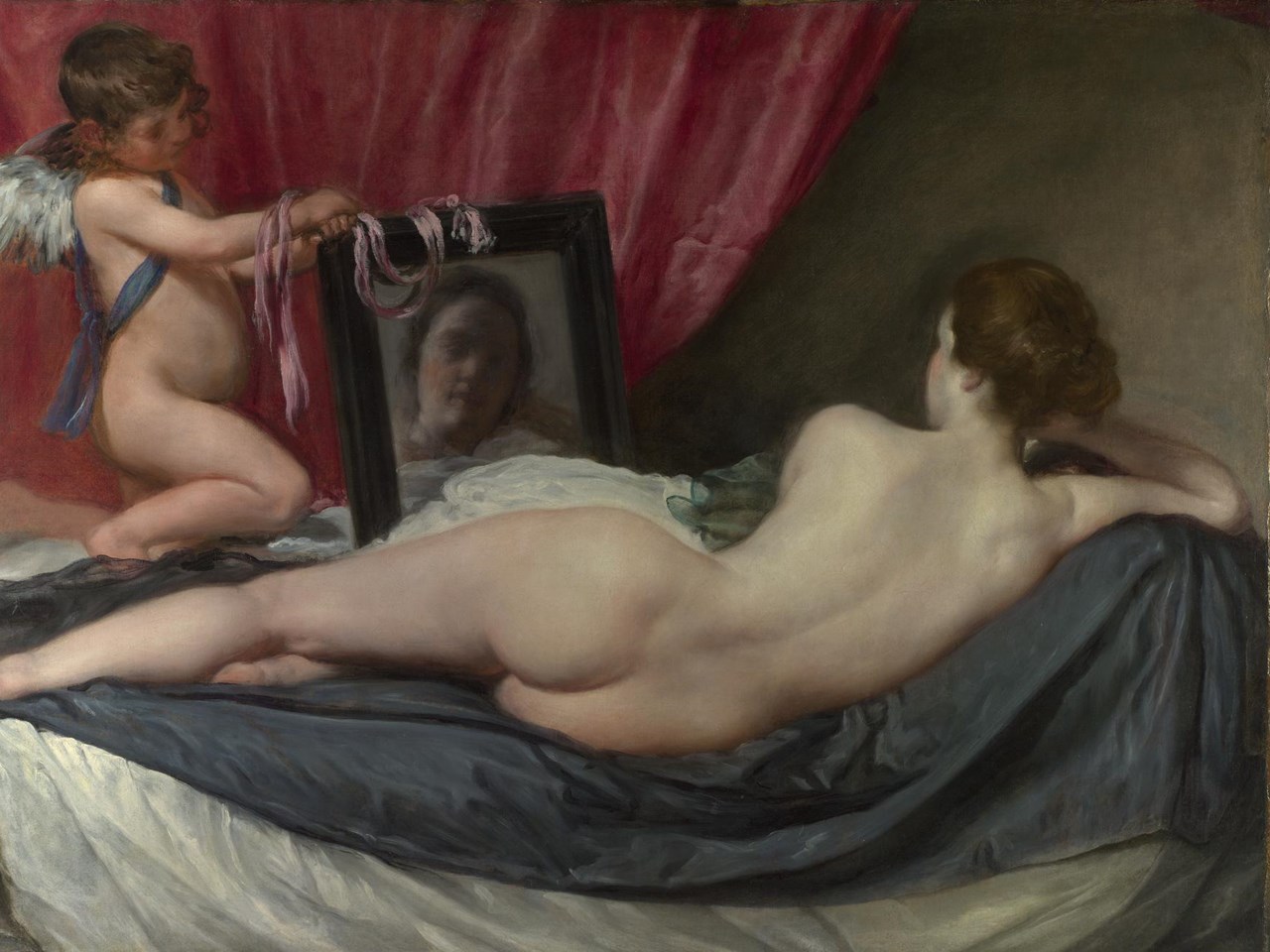

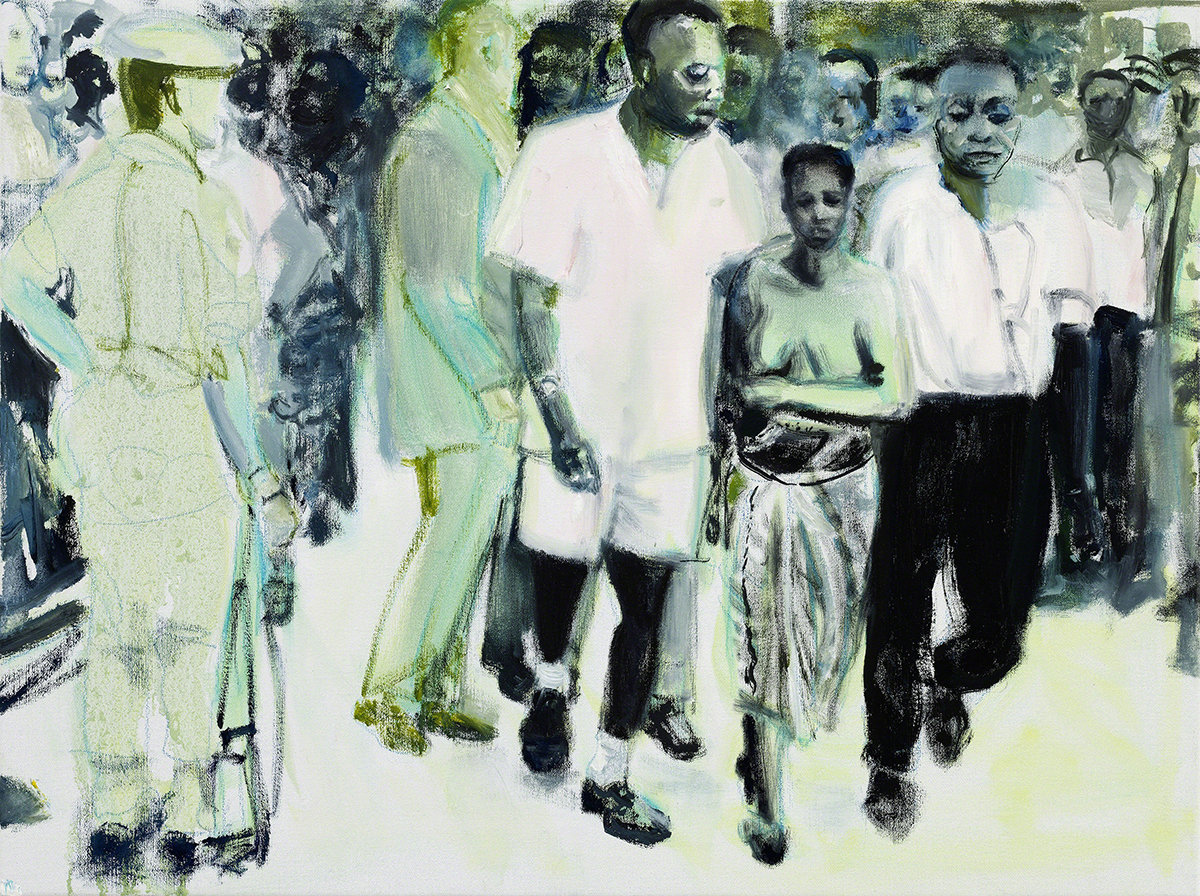
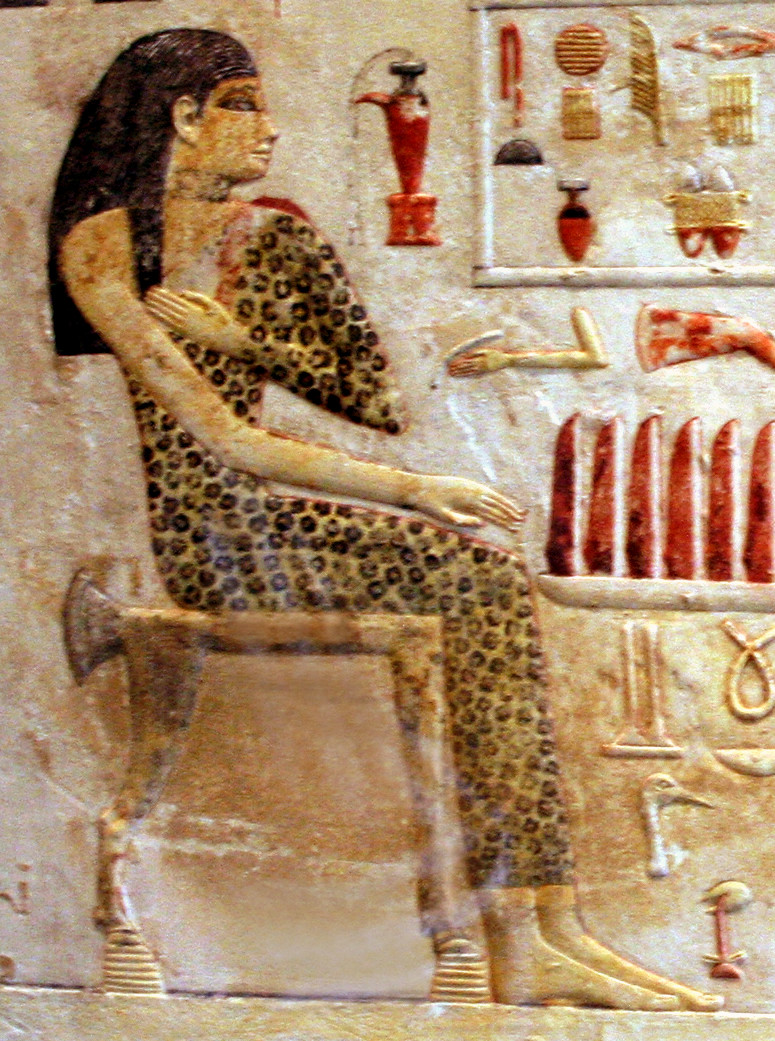
with special thanks to Amy Cutler
O FLUXO is an online platform for contemporary art.
EST. Lisbon 2010
Follow us:
@instagram
@facebook
O FLUXO
© 2023
